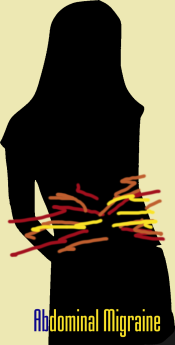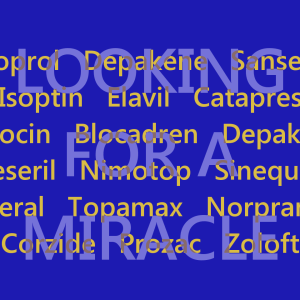Abdominal Migraine in Adults
Abdominal pain – likely a nauseous feeling – recurring again and again. It can be very hard to get a diagnosis, but it could be abdominal migraine.
 |
Abdominal migraine in adults is not often recognized, even though the medical community has been talking about it for almost a hundred years. Abdominal migraine is well recognized in children, all the more reason why it’s overlooked in adults. And to be fair, it probably is a rare condition.
As with most types of migraine, abdominal migraine brings on recurring symptoms. It usually lasts from a couple of hours to three days.
Unlike migraine headache, the pain in the abdomen isn’t one-sided. It could be very severe, or just a dull ache. During an attack, there is usually nausea and/or vomiting, or you may become pale and lose your appetite.
To be technically diagnosed with abdominal migraine, there should be no headache associated with the attack. In other words, instead of headache you have abdominal pain. However, it’s true that other types of migraine may include abdominal pain as well.
Other characteristics of migraine may be present, such as an aura before an attack.
Abdominal migraine usually starts in childhood and disappears in adulthood (or “changes” into other types of migraine). But there have been cases of abdominal pain from migraine appearing in adolescence and early adulthood for the first time.
Diagnosis of Abdominal Migraine in Adults
If the above description sounds like you, you’ve taken the first step. But your doctor will still want to run some tests and rule out other possibilities.
Be sure to tell your doctor how many attacks you’ve had, and what the symptoms were. She’ll want to rule out various other conditions, such as gallstones, irritable bowel syndrome, infections, and even abdominal epilepsy, which can be quite similar.
A common feature of abdominal migraine in adults seems to be a family history of migraine. If you know anyone in your family who may have had migraine, be sure to mention that. Also, your doctor will want to know if you had migraine symptoms when you were younger, or possibly cyclic vomiting syndrome.
Treatment of Adult Abdominal Migraine
Because it is so rarely diagnosed, there’s no standard treatment. However, there are some treatments which have been used successfully.
Triptans, a common migraine abortive, such as sumatriptan, may be tried. Pizotifen (pizotyline, Sandomigran, Sanomigran), a serotonin antagonist, has been used for abdominal migraine in adults. Other migraine treatments such as topiramate (Topamax), calcium channel blockers, beta blockers, and valproic acid (Depakote) may be tried, depending on the patient. Antihistamines have also been used.
For more information:


